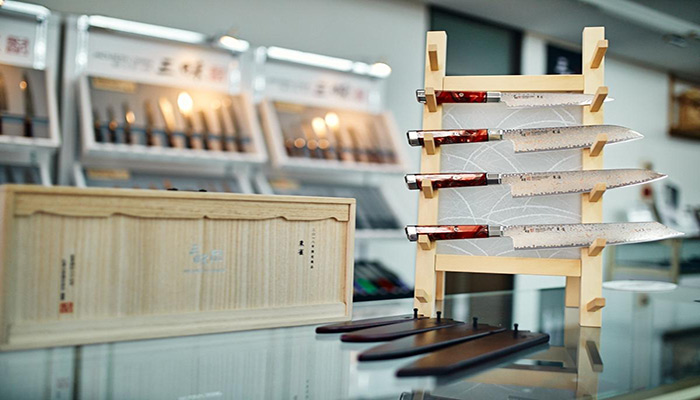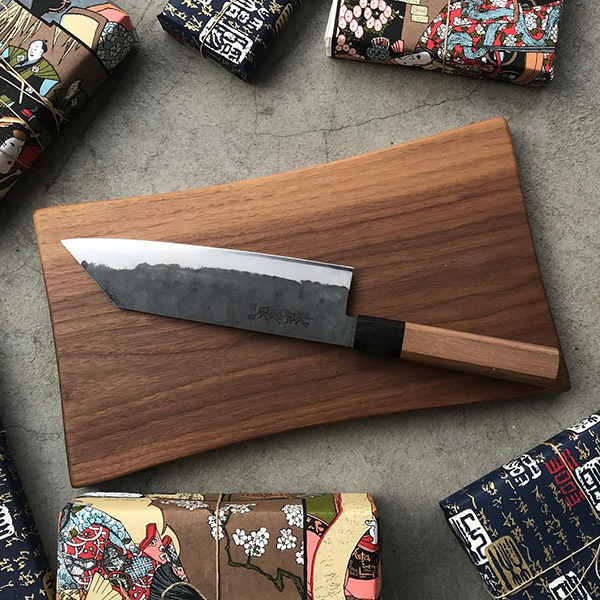In the illustrious world of culinary tools, Japanese chef knives have etched an indelible mark. Known not just for their aesthetics but also for their performance, these knives have become the favored choice of chefs and home cooks around the globe. From Tokyo to Toronto, these tools represent the perfect blend of tradition, craftsmanship, and functionality, upholding Japan’s rich culinary legacy while seamlessly catering to contemporary needs.

But within this broad spectrum of Japanese knives, Bunka knives stand out distinctively. Often referred to as the multi-talented jewel of the Japanese kitchen, the Bunka knives is versatile, agile, and unique in design. Holding a revered position in the hierarchy of Japanese knives, Bunka has garnered attention for its broad blade and sharp pointed tip, attributes that cater to a range of culinary tasks. This knife is a testament to Japan’s commitment to crafting tools that are as purposeful as they are beautiful. It is not just a knife; it’s a reflection of a culture that values precision, heritage, and excellence.
Table of Contents
The tradition of Japanese chef knives
The story of Japanese chef knives unfolds like an intricately crafted tapestry, weaving together centuries of craftsmanship, tradition, and innovation. Steeped in history, these knives have been forged by master craftsmen for generations, each blade reflecting the soul of its maker and the spirit of the land it hails from. At the heart of this rich legacy lies the Bunka knife, a symbol of both tradition and evolution. Its origin traces back to a time when Japan was perfecting the art of blade-making, a skill borrowed from samurai sword crafting. The dedication to precision, sharpness, and balance seen in these ancient swords was seamlessly transitioned into the culinary world, giving birth to tools like the Bunka knives.
Bunka, with its unique design and multi-purpose utility, stands as a bridge between the old and new. While its blade carries the time-honored techniques of Japanese blacksmiths, its adaptability to various culinary tasks signifies a nod to modern needs. Bunka’s inception wasn’t just about introducing another knife to the kitchen; it was about honoring a heritage while paving the way for innovation. In essence, it captures the essence of Japan’s culinary history while heralding its ever-evolving future.
Why are Bunka knives becoming so popular?
In the ever-evolving world of culinary arts, where dishes from different corners of the globe converge on our tables, the need for versatile tools has never been more paramount. Among the pantheon of Japanese chef knives, the Bunka knives stand out, carving a niche for itself in modern kitchens. The term “Bunka” translates to “culture,” a fitting representation for a blade that effortlessly amalgamates traditional craftsmanship with the demands of contemporary cuisine. Designed with a pronounced reverse-tanto or K-tip, the Bunka is not just a tool; it’s a testament to adaptability. Its sharp, angular tip is perfect for intricate tasks such as scoring, julienning, and finely dicing ingredients. This precision allows chefs and home cooks alike to execute dishes that demand exactitude and finesse.

But Bunka’s adaptability doesn’t stop at delicate operations. Its broader blade base offers robustness, making it equally adept at handling more vigorous tasks like slicing through vegetables, meats, and fish. The gentle curve of the blade facilitates a smooth rocking motion, allowing for efficient mincing and chopping. In a world where multitasking is essential, Bunka shines as a multi-purpose knife. Its design, rooted in Japanese tradition but fine-tuned for the modern-day, makes it a favorite among chefs seeking a balance between the old and the new. With the Bunka in hand, one is equipped with a knife that celebrates the art of Japanese knife-making while effortlessly meeting the diverse demands of today’s global kitchens.
How to know which knife is the right fit for you?
Choosing the right kitchen knife can elevate your culinary experience from routine to remarkable, especially when venturing into the realm of Japanese chef knives. These knives, renowned globally for their precision and craftsmanship, offer a variety to cater to distinct tasks.
At the heart of this collection is the Bunka, an embodiment of versatility. It seamlessly merges tradition with contemporary needs. When considering a Bunka, note its unique reverse-tanto (K-tip) design. This feature not only allows for intricate tasks like fine dicing but also handles robust jobs like slicing through thick vegetables or meats. However, beyond design, consider the blade’s material and the handle’s ergonomics. A good grip ensures comfort, while blade quality assures longevity and sharpness. Lastly, reflect on your primary cooking habits. If you seek a multi-purpose knife that leans into precision while also being robust, Bunka knives might be your perfect culinary partner. Remember, the right knife isn’t just a tool; it’s an extension of the chef’s hand.
Japanese chef knives have long been esteemed as not just tools, but as works of art, meticulously crafted by generations of master artisans. Their sharpness, balance, and design are testimony to a culture that values tradition and precision. Among these blades, the Bunka knives stand out prominently. It stands as a testament to Japan’s deep-rooted history in knife-making and emphasizes the enduring relevance and unmatched utility of such tools in contemporary kitchens. Choosing a Bunka is not just selecting a knife; it’s embracing a legacy.
Follow – https://viraldigimedia.com for More Updates